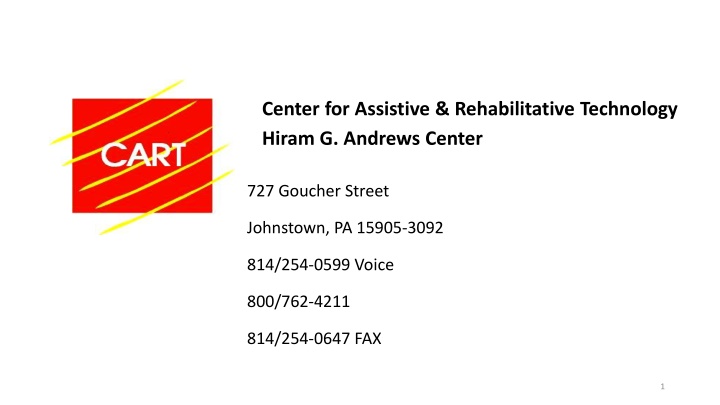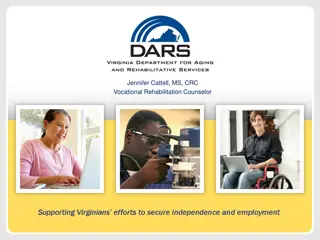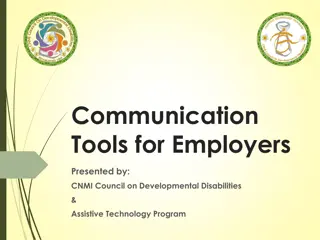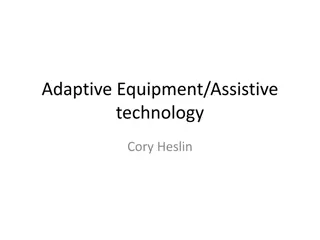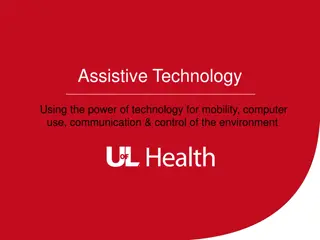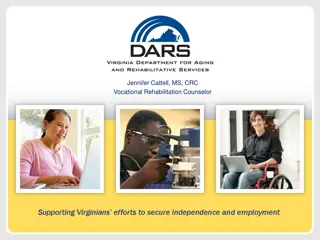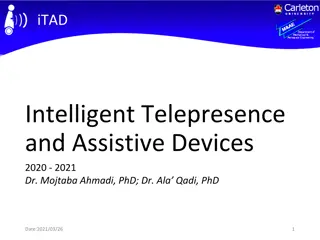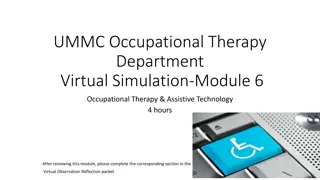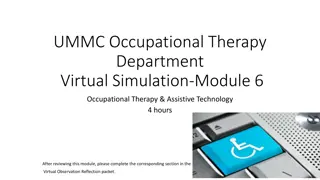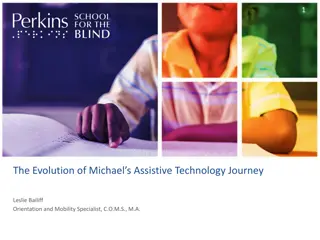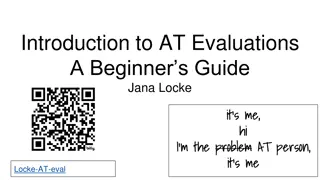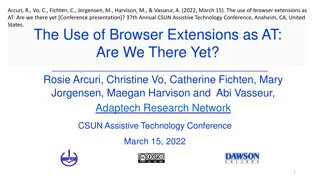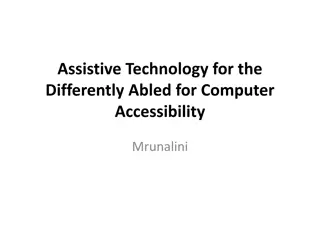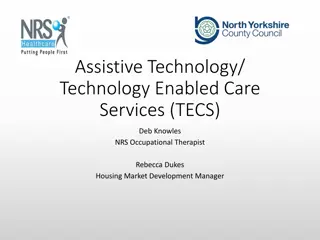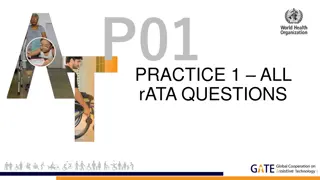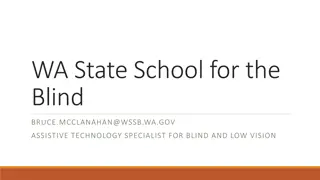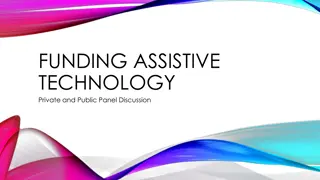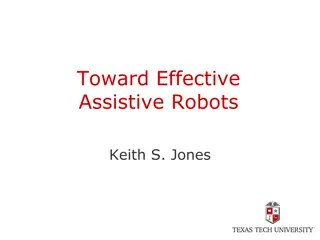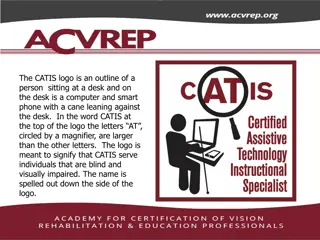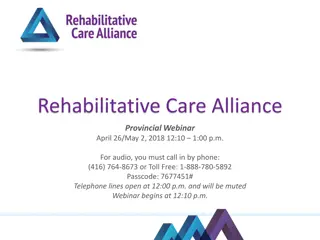Center for Assistive & Rehabilitative Technology at Hiram G. Andrews Center
The Center for Assistive & Rehabilitative Technology (CART) at Hiram G. Andrews Center in Johnstown, PA, has been providing assistive technology evaluations and services since 1995. CART aims to enhance the independence of individuals with severe disabilities by matching them with appropriate technology to meet their specific needs in various environments. Services include cognitive AT, computer access, mobility solutions, and more.
Download Presentation

Please find below an Image/Link to download the presentation.
The content on the website is provided AS IS for your information and personal use only. It may not be sold, licensed, or shared on other websites without obtaining consent from the author.If you encounter any issues during the download, it is possible that the publisher has removed the file from their server.
You are allowed to download the files provided on this website for personal or commercial use, subject to the condition that they are used lawfully. All files are the property of their respective owners.
The content on the website is provided AS IS for your information and personal use only. It may not be sold, licensed, or shared on other websites without obtaining consent from the author.
E N D
Presentation Transcript
Center for Assistive & Rehabilitative Technology Hiram G. Andrews Center 727 Goucher Street Johnstown, PA 15905-3092 814/254-0599 Voice 800/762-4211 814/254-0647 FAX 1
History of CART In the early 1990 s the Office of Vocational Rehabilitation Consumer Advisory Board requested a one stop shop to meet all of an individual s assistive technology needs Consumers were evaluated at several locations, receiving recommendations, and finding that their technology did not work together and/or not used Example: a person going to clinics for a wheelchair evaluation and a vehicle modification evaluation finds their wheelchair does not fit in their vehicle 2
History continued Department of Labor and Industry and the University of Pittsburgh collaborated to begin the Center for Assistive and Rehabilitative Technology (CART) CART opened its doors in 1995 CART has been providing Assistive Technology Evaluations to OVR customers and employees throughout the state of PA 3
Mission Statement To enhance the ability of persons with severe disabilities to fulfill their life goals through the provision of assistive technology services. 4
CART Service Areas CART Department assistive technology specialists evaluate a customer s abilities Specialists match customers with appropriate technology to maximize their independence in home, school, and/or work environments Evaluation, equipment recommendations, and training needs can be addressed in all areas 5
Assistive Technology Evaluations The following assistive technology evaluations are provided within the CART department: Cognitive AT Computer Access Activities of Daily Living Disability Support Services Pre-Driver Assessment Environmental Controls 6
Assistive Technology Evaluations continued Ergonomics Home Modifications Mobility School Modifications Sensory (Hearing and Vision) Technology Vehicle Modifications Worksite Accommodations Transitional Living Coordination 7
ADA and the Rehabilitation Act Define Accessibility The Americans with Disabilities Act states that organizations must provide everyone with equal access to goods, services, communications, and information. Section 508 of the Rehabilitation Act requires government and public entities to make their websites compatible with assistive technology. Between the two Acts, everyone must provide an accessible website. Accessibility is when the needs of people with disabilities are specifically considered. Products, services, and facilities are built or modified so they can be used by all people 8
Digital Accessibility Digital Accessibility refers to the removing of barriers that prevent interaction with or access to websites, digital tools, and technologies by people with disabilities. Accessibility and removal of barriers are significant for individuals who are visually, physically, and/or hearing impaired. Computers are equipped with accessibility settings such as Navigator, magnifier, dictation, screen masking, etc. 9
Digital Accessibility to the Internet for Visual Impairment Technology for the visually impaired: Screen Magnification ZoomText Magic Screen Reader JAWS Dolphin Wynn Kurzweil 1000 & 3000 Alternative to Print Refreshable Braille Display Focus Brilliant Braille Sense (Note Taker) Braille Note 10
Digital Accessibility to the Internet for Physical Impairment Technology for the those with physical impairments: Keyboards and Mice One-Handed Keyboard Trackball Mouse Keyboard Shortcuts Sticky Keys Hands-Free Mouse Tracking EyeGaze Sip and Puff Systems Voice Control/Speech-to-Text Dragon Naturally Speaking Enhanced Dictation 11
Digital Accessibility to the Interne for the Hearing Impaired Technology for the hearing impaired: Captions Video Relay Service Hearing Aids-Bluetooth Capable 12
